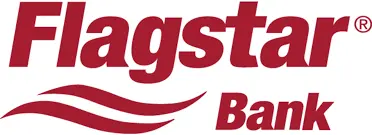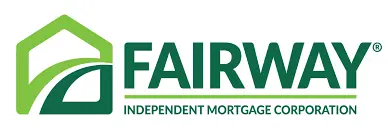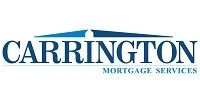How To Get an FHA Loan for a Mobile Home
If you’re looking for an alternative to a traditional, site-built home, you may want to consider financing a mobile home through the FHA manufactured home loan program. Sometimes called an FHA loan for a mobile home, this government-backed mortgage option allows borrowers with imperfect credit to buy a home at an affordable price.
Can you get an FHA loan on a manufactured home?
Yes, the Federal Housing Administration (FHA) backs FHA loans that you can use to purchase a home built in a factory. If you need to, you can also use the loan to buy a plot of land for the home to sit on.
You may know this type of house as a “mobile home,” but that isn’t the term used by the FHA today. FHA-eligible mobile homes are typically called manufactured homes and have to follow standards set in 1976 by the U.S. Department of Housing and Urban Development (HUD). Homes built prior to June 15, 1976, aren’t eligible for FHA financing.
You’ll need to meet FHA minimum mortgage standards as a borrower, and your manufactured home and the land it’ll sit on will have to meet special property and construction requirements.
What are my FHA manufactured home loan options?
There are two types of FHA manufactured home loans: the FHA Title II loan program and the FHA Title I program.
With the FHA Title II loan program:
- You can finance a new manufactured home, the cost of transporting it to its permanent location and any costs associated with installation.
- You can refinance an existing mortgage you borrowed to purchase a manufactured home, as long as the home has been installed at the site for at least a year.
- Your home must be permanently attached to land that you own.
With the FHA Title I loan program:
- You can finance a new or used manufactured home, even if you don’t own the land it’s sitting on.
- You can finance a site for a manufactured home to sit on.
- You can finance repairs or improvements to a manufactured home you already own, as long as you own the lot it sits on.
- You can refinance both a manufactured home and lot, or either one separately.
- Your home doesn’t have to be permanently attached to land, but can be.

How to buy a manufactured home with an FHA loan
You can apply for a manufactured home loan directly with an FHA-approved lender or go through a dealer, who can help you apply. Much like cars, manufactured homes are usually sold through a dealer.
Recommended FHA loan lenders
Construction requirements for FHA manufactured home loans
FHA-approved lenders will need to verify the following:
- The home site has access to water and sewer facilities
- The site has all-weather access
- The living area is at least 400 square feet
- The home has an approved HUD seal visible on the exterior
- Whether the home is permanently attached to land according to local building guidelines
How to qualify for an FHA manufactured home loan
Down payment
The minimum down payment is 3.5%, and the home purchase and installation costs can be added to the loan amount.
Credit score
The FHA accepts scores as low as 500 with a 10% down payment. Borrowers making a 3.5% down payment will need at least a 580 credit score.
DTI ratio
The FHA caps your debt-to-income (DTI) ratio — which measures the portion of your gross monthly income that goes toward debt payments — at 43%. This will include your new FHA mortgage payment. However, you may still qualify with a higher DTI ratio if you have a high credit score or extra cash reserves.
Mortgage insurance
FHA manufactured home loans require two types of FHA mortgage insurance: an upfront mortgage insurance premium (UFMIP) and an annual mortgage insurance premium (MIP). The UFMIP is equal to 1.75% of your loan amount and can be paid in full at closing or rolled into the loan amount. The annual MIP ranges from 0.15% to 0.75% of the loan amount and is divided by twelve and added to your monthly payments.
Loan limits
HUD sets different lending guidelines for each loan program.
- For Title II loans, the FHA loan limits that apply to all FHA loans also apply. These are set each year based on national median home prices. In 2025, the FHA loan limit for a single-family home is $524,225 in most U.S. counties.
- For Title I loans, your loan limit depends on what you’re buying with the loan:
- If you’re buying a home and land, your loan limit is $148,909 (for a single section) or $237,096 (for multiple sections).
- If you’re buying just a manufactured home, your loan limit is $105,532 (for a single section) or $193,719 (for multiple sections).
- If you’re buying just a lot, your loan limit is $43,377.
Land requirements
An FHA manufactured home can be placed on land you own, but it’s not required. If you’re leasing land, the lease typically needs to be for three years or longer. The lease must also stipulate that you’ll receive at least 180 days of notice if the landlord plans to terminate your lease.
Occupancy
The home must be your primary residence for at least one year.
CAIVRS check
The government maintains a database of borrowers with delinquent federal debts called the Credit Alert Interactive Verification Reporting System (CAIVRS). Your lender will run a CAIVRS check to ensure you don’t owe any outstanding debts to the federal government. If you do, you’ll be ineligible for an FHA manufactured home loan.
Can I take out more than one FHA manufactured home loan?
You’re limited to one Title I FHA manufactured home loan at a time. However, you can have both a Title I and Title II loan at the same time. If you already own a manufactured home with an FHA loan and decide you want to do renovations or repairs, you can borrow an FHA Title I property improvement loan or refinance into an FHA 203(k) loan.
How to find lenders for FHA manufactured home loans
You may need to shop around to find an FHA-approved lender that offers loans for manufactured homes. If you’re unsure how to do that, follow these tips:
- Search for FHA-approved lenders in your area using the HUD lender list.
- Get loan estimates from three to five lenders and compare the terms they’re offering.
- Talk to lenders and ask about the loan officer’s experience working with FHA manufactured home loans. This loan type can be complex, and you’ll want someone who can help you successfully jump through all the hoops.
Alternatives to FHA manufactured home loans
Conventional loans
A loan that’s not government-backed can be a good choice for borrowers with solid credit, since private mortgage insurance (PMI) can be cheaper than FHA mortgage insurance for borrowers with high credit scores. Here are a few conventional options that can be used to buy a manufactured home:
- Fannie Mae MH and MH Advantage® loans. Manufactured homebuyers only need a 3% to 5% down payment for these loans. They may also be eligible for reduced PMI to help keep monthly payments as low as possible.
- Freddie Mac Home Possible® loan. This program requires a 3% minimum down payment, but it’s only for borrowers who make less than 80% of their area’s median income. You can check your eligibility using Freddie Mac’s online tool.
- Freddie Mac CHOICEHome® loan. You’ll need a 5% down payment to qualify, and the home must have features similar to a site-built home — like a roof with eaves, a covered porch and a garage or carport — to be eligible for financing.
VA loans
The U.S. Department of Veterans Affairs (VA) guarantees mortgages on manufactured homes for eligible military borrowers with a 5% down payment. VA loans for manufactured homes also require proof that the home is attached to land you own.
USDA loans
If you’ve found a plot of land in a rural area, you may be able to install a manufactured home on it with a USDA loan backed by the U.S. Department of Agriculture (USDA). No down payment is required, but you’ll need to stay within local USDA income limits.






